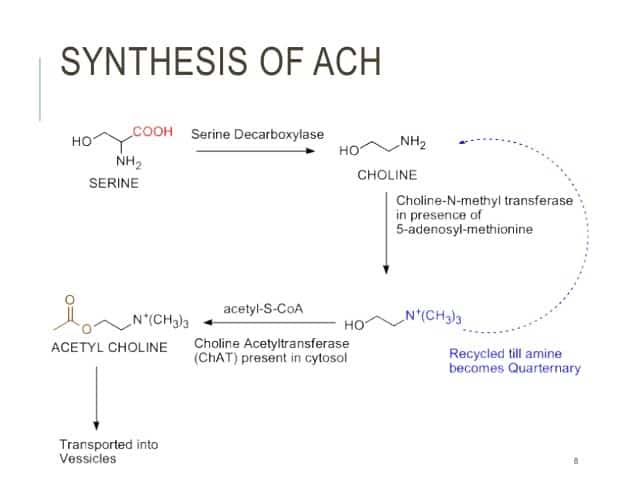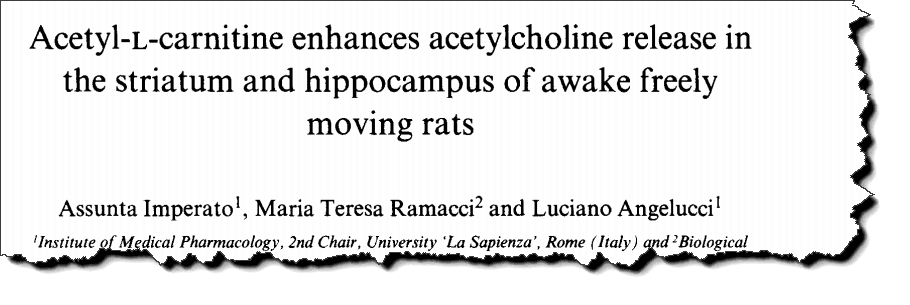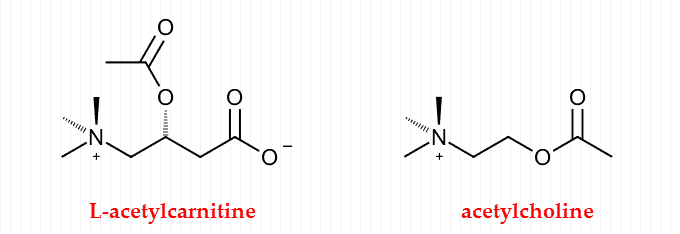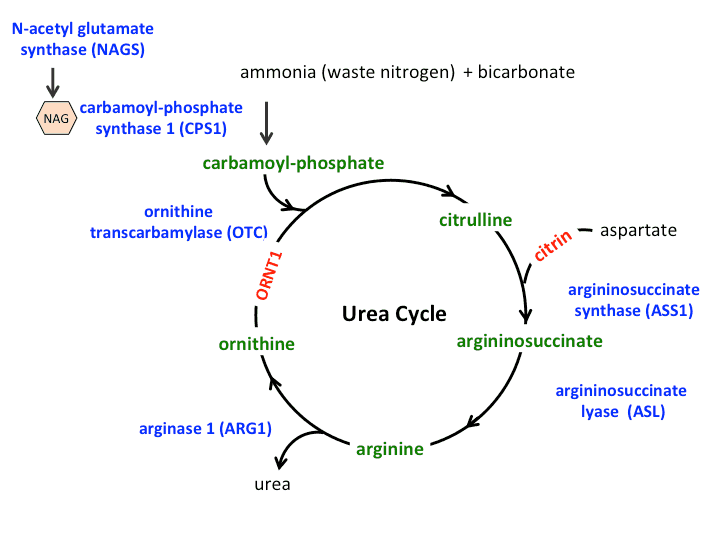
Huge male supplement sales of carnitine today — the question is, why are so many men using carnitine?
—-Important Message From Our Sponsor—-
This 4-word phrase is scientifically proven to boost HER libido
Believe it or not, every woman’s brain comes hard-wired with a “chase” mechanism…
And when this chase mechanism is activated, her libido spikes, turning her into a wildly passionate woman…
Even wives who have said they’re done with sex can have their libido reawakened by this 4-word phrase I’ve discovered…
And men can enjoy being seduced every single night, maybe even twice a night…
Try this 4-word phrase on your wife or girlfriend tonight.
WARNING: Link may contain sexual triggers not suitable for certain men.
———-
Why so many men are taking carnitine
Of course we all know that humans require vitamins to survive…
Yet there are a few non‑vitamin metabolites we’d do better having more of.
Acetylcarnitine is one such essential metabolite.
It belongs to the same class of non‑vitamin supplements that includes tetrahydrobiopterin and alpha-lipoic acid.
As with vitamins, we’d surely die without these essential metabolites.
(Since we can make them ourselves, metabolites aren’t technically considered vitamins. That’s basically the difference between vitamins and metabolites.)
Acetylcarnitine is produced endogenously (outside the body), and also occurs naturally in food.
And studies consistently demonstrate that taking a bit extra results in multiple benefits.
The sheer breadth of conditions improved by acetylcarnitine is almost unbelievable…
Giving a full account would take a book.
Even merely listing the manifold benefits resulting from acetylcarnitine studies may invite disbelief…
For that reason, it would be better to explain its prime function first.
Once we understand how acetylcarnitine operates in the body, we can easily comprehend all of the beneficial clinical reports…
We could probably even predict some of them.
Acetylcarnitine’s primary function is the transport of fatty acids into the mitochondria for oxidation.
The ability of this transporter to increase cellular energy production has been noted for nearly a century.
And its biochemistry was essentially all worked out during the 1960s.
From a 1961 study (Fritz):
“At an albumin to palmitate ratio of unity, the carnitine induced increase in palmitate oxidation by liver particulates was over tenfold.”
Besides its transport function, this molecule is also a ubiquitous coenzyme.
It can readily exchange its fatty acid/acetyl group with coenzyme A.
There are many different mitochondrial enzymes that can accomplish this task.
They all have varying specificities depending on fatty acid chain length.
Carnitine palmitoyltransferase, carnitine O‑acetyltransferase, and carnitine O‑octanoyltransferase are the main enzymes.
In all cases, the reaction is similar (Seiler, 2015):
“Short-chain carnitine conjugates, including acetylcarnitine, derive from their corresponding acyl-CoA (acetyl coenzyme A) precursors via the action of carnitine acetyltransferase, a bidirectional mitochondrial matrix enzyme.”
These three enzymes exist in the mitochondria.
They are bidirectional and are capable of transferring acetyl and fatty acid attachments between coenzyme A and carnitine (or vice versa):
Coenzyme A is an important metabolite, serving to make fatty acids water‑soluble and facilitating their beta-oxidation.
Carnitine also makes fatty acids soluble.
But it can also do something that coenzyme A is incapable of.
Carnitine is unique and irreplaceable because it can get inside the mitochondria more easily than coenzyme A.
This is where our enzymes for beta-oxidation are (such as thiolase).
And for this reason carnitine is the primary transducer of fatty acid oxidation.
So you might then expect it to be helpful in obesity and diabetes type 2, two conditions it has in fact been shown to improve:
This study was conducted by Italians on 18 diabetic subjects in Rome.
Acetylcarnitine was delivered intravenously in three dose levels, all the while the subject’s blood glucose was held constant with insulin.
They found that acetylcarnitine increased both glucose flux and metabolic rate…
…thus lowering the amount of insulin needed to maintain steady‑state glucose levels.
The ratio of glucose clearance rate over insulin needed went up by 55% in the patients given acetylcarnitine.
That’s a powerful demonstration of an enhanced metabolism.
“The main result of this study is that a higher plasma acetylcarnitine level translates to a higher glucose uptake rate…”
Needing high levels of insulin to achieve normal oxidation is the very definition of diabetes type 2 – and also its prime diagnostic criteria.
So you could rightly say that acetylcarnitine partially reverses that condition.
With enough thiamine, alpha‑lipoic acid, and avoiding omega-6 fatty acids, acetylcarnitine could probably help eliminate type 2 diabetes entirely.
This is no real surprise to people who’ve read about carnitine.
Studies dating back to the 1950s demonstrate this molecule’s potential in increasing glucose and fatty acid metabolism.
Since L‑carnitine can transfer fatty acids into the mitochondria and acetyl groups onto coenzyme A, we can also expect it to catalyze both lipid and sugar metabolism.
From 1961 (Fritz) again:
“The magnitude of the carnitine‑induced increase in the conversion of labeled fatty acids to CO2 was approximately tenfold for palmitate, stearate, and oleate, threefold for laurate and myristate, and less than twofold for octanoate, butyrate, and acetate…”
These are indeed the classic functions of L‑carnitine.
Yet acetyl‑L‑carnitine can execute the very same roles after giving its acetyl group to coenzyme A – and it does this readily.
The attached acetyl group of acetylcarnitine is not a liability but a benefit…
That’s because this lends it a greater brain uptake and “preloads” it with one of the precursors to acetylcholine.
Besides requiring choline to make acetylcholine in the nervous system, the enzyme choline acetyltransferase requires as many acetyl groups in the form of acetyl-CoA (acetyl coenzyme A).
This is likely why many studies have shown that acetylcarnitine is capable of increasing acetylcholine synthesis.
So here is what we can expect acetylcarnitine to do on a chemical level:
(1) Stimulate the beta-oxidation of fatty acids
(2) Enhance the soluble “acetyl pool”
(3) Increase the ratio of acetyl-CoA compared to its unconjugated form
The enzymatic rate of choline acetyltransferase depends on both acetyl-CoA and choline concentrations.
So it seems predictable that acetylcarnitine should enhance acetylcholine synthesis:
In this study, researchers routed small dialysis tubes into the brains of rats to determine the rate of acetylcholine released.
They also injected acetylcarnitine peripherally, near the intestines, a location pharmacokinetically analogous to taking an oral dose.
They found significant increases in basal acetylcholine release, with the highest dose of acetylcarnitine doubling its output:
The study design suggests that acetylcarnitine is brain‑permeable, an observation later proven using rigorous PET imaging.
“The threshold dose for a significant effect in both areas was 50 mg/kg with a maximal increase in Acetylcholine release of about 35-40% after 40 min.”
In fact, dozens of such studies relate acetylcarnitine to the acetylcholine system.
And all of them demonstrate a facilitative effect.
Some of the interest has been on account of the close similarity between acetylcholine and acetylcarnitine.
And binding studies actually indicate that acetylcarnitine does have weak activity on acetylcholine receptors.
Yet quantum mechanical calculations suggested the D‑isomer ought to be more active (Reed, 1980).
(This prediction was confirmed via direct binding data.)
So this similarity between acetylcholine and acetylcarnitine is likely not the prime mechanism – because the D‑isomer is largely ineffective in vivo.
The D‑isomer of acetylcarnitine has been reported to have only 1/4000 the activity of acetylcholine on receptors.
On the other hand, the natural L‑form has even less, with 1/10000 the activity.
“Acetylcarnitine, a naturally occurring compound found in high concentration in heart and skeletal muscle of vertebrates, bears structural resemblance to acetylcholine – and studies have shown that it has slight cholinergic properties.” –Reed 1980
So, although acetylcarnitine does have slight cholinergic properties, its main function appears to be stimulating acetylcholine synthesis through acetyl-CoA.
As the study above demonstrates, this latter effect can be significant.
As a proven cholinergic agent, it should be no surprise that acetylcarnitine has been found useful in Alzheimer’s disease.
And sure enough, that is another condition where it has shown significant effects.
For this meta‑analysis, they scoured the literature and found 90+ studies on acetylcarnitine and dementia.
Twenty‑one studies of this set fulfilled their rigorous inclusion criteria and they selected these for further analysis.
All of the studies selected were double‑blind, prospective, and placebo‑controlled studies over three months in duration.
Since many of these studies took place in foreign countries and across different decades, the researchers chose to normalize the results using one parameter.
They reduced the individual reported scores of the 12 different standardized tests and 40 psychometric scales used down to one measure and then combined.
The resulting statistic was an effect size, which compares the acetylcarnitine groups directly against placebo.
“This type of global measure from multiple tests provides a solution to assessment of treatment efficacy where no single outcome measure is sufficient, as is clearly the case in mild AD (Alzheimer’s). None of the individual scales used in the studies would describe all relevant aspects of efficacy.”
They noted a significant advantage of acetylcarnitine versus placebo, not bad for an affordable and safe natural metabolite.
The doses used in the studies fell into a relatively narrow range, between 1-1/2 and 3 grams.
It probably goes without saying that acetylcarnitine had also been considered “well tolerated.”
Currently, the brain acetylcholine system is considered the prime dysfunction in Alzheimer’s disease.
However, explanations surrounding its effect involve a more extensive role.
That is perhaps fair in this case, as acetylcarnitine has many effects throughout the body.
By stimulating general metabolism of fatty acids (among other things), this molecule would also be increasing the brain glucose flux needed for cognition.
“Meta-analysis showed a significant advantage for acetylcarnitine compared to placebo for the integrated summary effect. The beneficial effects were seen on both the clinical scales and the psychometric tests.”
But that’s not all, and even the authors of review articles don’t have the space to explain all the relevant functions of this molecule.
Acetylcarnitine has also been shown to lower ammonia…
That is also relevant to Alzheimer’s in that elevated levels can cause cognitive disturbances.
Hyperammonemia is considered the main cause of hepatic encephalopathy, the brain dysfunction consequent of liver failure.
This condition can be fatal, as sky‑high ammonia levels rapidly lead to cerebral edema and coma.
For this reason, ammonia detoxification receives a fair share of attention and has utility in emergency medicine and in cirrhosis management.
This study is just one of the dozens on this particular effect.
They induced hyperammonemia in rats acutely through injection of ammonium acetate, and also chronically using injections of urease.
Urease is an enzyme that converts the safer urea back into ammonia, certainly a dangerous enzyme to have in the body.
All of the rats injected with ammonium acetate died within 15 minutes…
BUT in a miraculous manner, pretreatment with carnitine prevented this in 100% of cases.
“The animals developed clear symptoms of ammonia toxicity; hyperexcitability and drowsiness appeared first, followed by noise-induced seizures and coma. Clonic and tonic convulsions preceded death which occurred in all cases 10-15 min after the injection.”
Although many similar molecules (e.g. choline, betaine, trimethylamine oxide) are somewhat protective against ammonia toxicity, none is more effective than carnitine.
This is probably because quaternary amines are positively charged at neutral pH.
This confers affinity for the mitochondria on account of its opposing negative change.
Ammonium is also positively charged (NH4+), so the two should have similar electrophoretic properties in vivo.
Selective stains commonly used to visualize mitochondria are also all positively charged amines (such as TMRE)…
That’s just what you’d require of a molecule designed for that role.
Yet carnitine always works far better than choline and betaine.
And it turns out that there’s a particular enzyme involved in this.
The precise role of carnitine’s role is hinted by the studies showing that it increases the production of urea – the safe detoxified form of ammonia.
It appears that carnitine’s idiosyncratic effect on ammonia detoxification is initiated by the production of acetylglutamate.
Acetylglutamate is the activator for carbamoyl phosphate synthetase.
It’s a mitochondrial enzyme that combines one molecule of ammonia, one of bicarbonate, and one of phosphate to form carbamoyl phosphate.
“L-carnitine prevented entirely ammonia toxicity in mice when injected intraperitoneally 30 min before a lethal dose of ammonium acetate.”
This process eliminates one molecule of ammonia for each carbamoyl phosphate produced.
But the detoxification effect does not stop there…
Carbamoyl phosphate is actually a precursor along with ornithine for citrulline.
This is crucial because citrulline occupies a prime role in the urea cycle…
Eventually it is used to eliminate two additional molecules of ammonia for every one of urea produced.
So carnitine is a first‑rate ammonia detoxifier, deserving a place in emergency medicine next to citrulline and benzoate.
And, considering how inebriating elevated plasma ammonia can be, this could be another factor underlying its success in Alzheimer’s‑type dementia.
Carnitine has been used to treat hepatic encephalopathy in the past.
And its use for this condition is explained through ammonia reduction.
But that’s not all…
As a molecule that catalyzes beta‑oxidation of long‑chain fatty acids, you could expect that carnitine would decrease the formation of lipofuscin.
(Lipofuscin is a brain inclusion body consisting of iron, proteins, and oxidized polyunsaturated fatty acids polymerized together.)
And L‑carnitine has done that, which is certainly another feather in the hat for this essential metabolite:
Lipofuscin is generally absent in young mammals, yet reliably increases with age in most if not all species.
Lipofuscin has been found to occupy about 75% of the internal volume of neurons in centenarians.
It crowds out metabolic space and potentially induces death in and of itself.
We may avoid cancer and cardiovascular disease, yet eventually lipofuscin seems to get everybody who manages to survive everything else.
Most cells are able to dilute lipofuscin through the process of mitosis.
But, because neurons rarely divide, it selectively accumulates in the nervous system.
“Lipofuscin accumulation is one of the best known age-related changes in postmitotic cells such as nerve and myocardial muscle cells.”
Diets high in iron and/or polyunsaturated fatty acids have consistently been shown to accelerate this process.
And antioxidants such as selenium and vitamin E have consistently been found to delay it.
Polyunsaturated fatty acids (PUFAs) are the main component of lipofuscin…
So anything that safely eliminates or metabolizes PUFAs could be seen as being protective against lipofuscin.
A 1989 study tried carnitine on rats using a similar rationale.
And that experiment resulted in ~20% decreases of lipofuscin in the brain regions examined.
“Treatment with acetylcarnitine significantly reduced lipofuscin autofluorescence both in the prefrontal cortex and in the hippocampus.” –Amenta, 1989
So not only does L‑carnitine and acetyl‑L‑carnitine protect against Alzheimer’s disease, type 2 diabetes, and hyperammonemia…
It can also be considered a general anti‑aging molecule.
This can be taken alongside vitamin E, selenomethionine, and ascorbyl palmitate to prevent lipofuscin accumulating with age.
Science suggests that consuming antioxidants while avoiding PUFAs is the best way to prevent lipofuscin…
And now studies suggest that acetyl‑L‑carnitine should be consumed as well.
“Yet since acetyl‑L‑carnitine readily enters the brain while L‑carnitine does not, you might expect that to have an even greater effect than the 20% reductions observed above.”
BUT acetyl‑L‑carnitine has at least one more function.
This metabolite has been shown to upregulate receptors that signal nerve growth factor (Taglialatela, 1992).
And in some experiments it even increases the growth factor itself (Piovesan, 1993).
It’s not clear why this should be so, as carnitine doesn’t significantly bind to any known receptor.
Yet, since the specific nerve growth factor receptor it upregulates needs to be palmitoylated for proper function (called p75NTR), you might expect this to be what underlies the effect.
“Another post-translational modification of p75NTR is palmitoylation of the cysteine residue within the juxtamembrane domain. Palmitoylation of proteins mediates membrane attachment and can play an important role in regulating their signaling abilities, possibly through spatial segregation of signaling proteins into cholesterol- and sphingolipid-rich subdomains, which some term ‘lipid rafts’…” –Underwood, 2008”
Having palmitate attached to p75NTR changes its location on the cell membrane.
This increases its affinity for “cholesterol rafts” which occupy discrete areas.
Only the enzyme that cleaves it for activation are found in cholesterol rafts.
So, without a palmitate group, the receptor is largely inactive.
Protein palmitoylation is considered an intracellular signalling mechanism.
And, and since L‑carnitine easily becomes palmitoyl‑L‑carnitine, it’s likely a catalyst of that as well.
So the classic function of carnitine (coenzyme and carrier of acetyl/fatty acid groups) leads to a diverse array of functions that might initially be seen as unrelated.
Carnitine isn’t magic.
But it IS an underestimated metabolite and cofactor for many enzymatic pathways.
Since one such pathway involves the formation of acetyl‑CoA, carnitine also influences enzymes dependent on that.
Carnitine can rightly be seen as a partial antidote to a diet high in long‑chain fatty acids…
Yet it should be helpful for just about anybody who takes it.
—-Important Message—-
Strangest Japanese sex practice (watch) NSFW
It sounds crazy… and it’s been completely ignored by the mainstream media…
There’s a “Quiet Revolution” taking place in one of the far corners of the world…
And it has to do with this weird Japanese sex practice that older men are doing…
…and how they are having more nookie with this weird sex practice than any other men on the planet…
———-

- Imperato, Assunta. "Acetyl-L-carnitine enhances acetylcholine release in the striatum and hippocampus of awake freely moving rats." Neuroscience letters (1989) https://www.sciencedirect.com/science/article/pii/0304394089908264
- Giancaterini, A. "Acetyl-L-carnitine infusion increases glucose disposal in type 2 diabetic patients." Metabolism (2000) https://s3.amazonaws.com/academia.edu.documents/45728354/meta.2000.625020160517-26868-fpmvq5.pdf?AWSAccessKeyId=AKIAIWOWYYGZ2Y53UL3A&Expires=1548904887&Signature=W48%2FQm75QPwSn4ucYgGITIsCmoY%3D&response-content-disposition=inline%3B%20filename%3DAcetyl-l-carnitine_infusion_increases_gl.pdf
- Montgomery, Stuart. "Meta-analysis of double blind randomized controlled clinical trials of acetyl-L-carnitine versus placebo in the treatment of mild cognitive impairment and mild Alzheimer's disease." International Clinical Psychopharmacology (2003) http://juvenon.com/pdfs/AC_Meta-analysis_paper1.pdf
- O'Connor, José-Enrique. "Protective effect of L‐carnitine on hyperammonemia." FEBS letters (1984) https://febs.onlinelibrary.wiley.com/doi/pdf/10.1016/0014-5793(84)80106-4
- Amenta, Francesco. "Reduced lipofuscin accumulation in senescent rat brain by long-term acetyl-L-carnitine treatment." Archives of gerontology and geriatrics (1989) https://www.sciencedirect.com/science/article/pii/0167494389900356
- Carnitine — Health Professional Fact Sheet https://www.ods.od.nih.gov/factsheets/Carnitine-HealthProfessional/
- L-Carnitine | Linus Pauling Institute | Oregon State University https://lpi.oregonstate.edu















